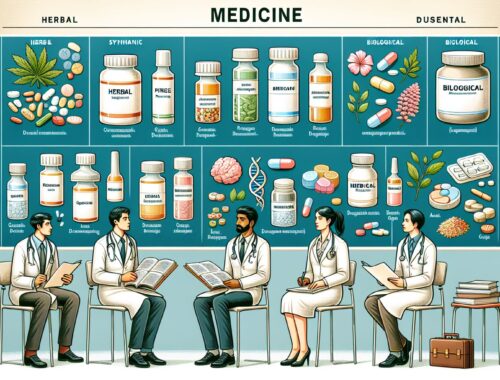
A Guide to the Different Types of Medicines
From treating a minor headache to managing chronic diseases, medicines play a crucial role in maintaining our health and well-being. With a plethora of options available today, it can be overwhelming to understand the different types of medicines and their purpose. In this article, we will explore the various categories of medicines and their specific functions, helping you gain a better understanding of the medications you might encounter throughout your life.
Introduction to Medicines
Medicines are substances that have healing properties and are used to prevent, diagnose, treat, or cure diseases. They can be derived from natural sources like plants and animals or created synthetically in laboratories. Medicines come in various forms such as tablets, capsules, liquids, injections, creams, inhalers, and even patches. Now, let’s take a closer look at the classifications of medicines.
Over-the-Counter (OTC) Medicines
Over-the-counter medicines are readily available without a prescription and are used to treat minor ailments like headaches, allergies, and cold symptoms. These medications provide relief from pain, reduce inflammation, or alleviate certain symptoms. Common examples include pain relievers like acetaminophen and ibuprofen, antihistamines for allergies, and cough suppressants.
Prescription Medicines
Unlike over-the-counter medicines, prescription medicines require a written directive from a licensed healthcare professional, such as a doctor or a pharmacist, to be dispensed. These medicines are typically prescribed to manage acute or chronic conditions like infections, high blood pressure, diabetes, or mental health disorders. Prescription medications are often more potent and carry potential side effects, necessitating professional supervision.
Generic Medicines
Generic medicines are bioequivalent alternatives to brand-name drugs. After the patent for a brand-name drug expires, generic versions become available. They share the same active ingredients, dosage, strength, route of administration, and therapeutic effects as the original medication. Generic medicines are both affordable and safe, making them an accessible choice for many individuals.
Complementary and Alternative Medicines (CAM)
Complementary and alternative medicines refer to a diverse range of medical practices and products that fall outside the realm of conventional medicine. These therapies are used alongside or instead of traditional treatments, often focusing on holistic well-being and natural remedies. Examples of CAM include acupuncture, herbal supplements, chiropractic treatments, and meditation. It is crucial to consult with healthcare professionals before pursuing such therapies to ensure their safety and effectiveness.
Specialty Medicines
Specialty medicines are designed to treat complex, rare, or chronic conditions that require specialized knowledge, monitoring, or administration techniques. These medications are often high-cost and may require special handling, such as refrigeration or intravenous administration. Examples include biologics for autoimmune disorders, chemotherapeutic agents for cancer treatment, and antiretroviral drugs for HIV.
Conclusion
Understanding the different types of medicines is essential for ensuring proper usage and maximizing their benefits while minimizing potential risks. Over-the-counter medicines provide relief for minor ailments, while prescription medicines address more severe or chronic conditions under professional guidance. Generic medicines offer affordable alternatives, and complementary and alternative medicines broaden the spectrum of available treatments. Lastly, specialty medicines cater to specific complex health conditions. Remember, always consult healthcare professionals to determine the appropriate course of action and find the safest and most effective treatment for your needs.
You May Also Like

Understanding the Different Types of Medicines
January 7, 2024
Understanding the Different Types of Medicines
January 13, 2024

